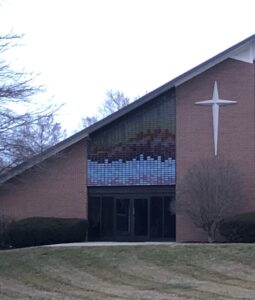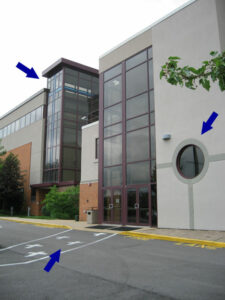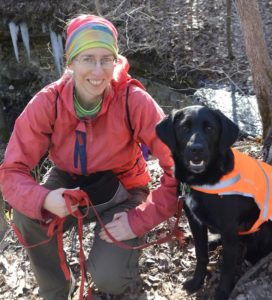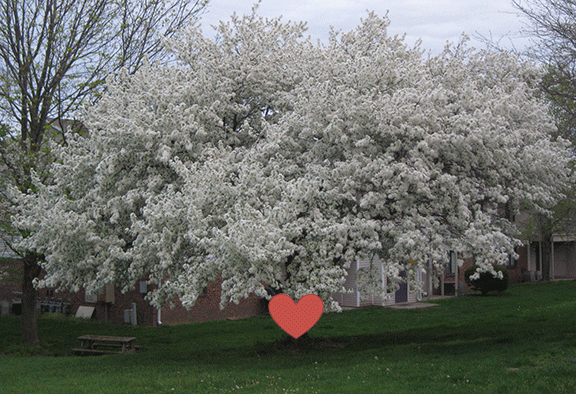I didn’t realize I was odd.
Well, let me rephrase. I didn’t realize I was odd in this particular way, until I started to notice: when I went to the Methodist carry-in, everyone was Methodist. When I went to the nondenominational Bible study, everyone was nondenominational. When I went to the Catholic speaker series, everyone was Catholic.

Did anyone besides me hang out at denominations besides their own?
It seemed like in general, the answer was no. Most people I talked to found a home church and stayed there.
I am a huge proponent of having a home church. It’s important to connect regularly with people who know and support one another. I also visit other churches every chance I get. I love experiencing different forms of worship, liturgy, and teachings. It doesn’t mean I ascribe to all their beliefs, but I learn something deeper about my own faith by engaging with others.
So, on this eve of St. Valentine, I’d like to share with you some of the things I love about our denominational differences.
What I love about the Roman Catholic Church.
First and foremost, I love the depth of their theology. Whether you agree with it or not, there is an answer to every question you can think up. They have had the structure and the history to maintain and build upon generations of scholars who have devoted entire lives to the study of God. I also love the high calling of the single person within the Catholic Church, whether within the religious orders or within lay leadership. In addition to religious outreach, they actively engage with and are foundational to the creation of major institutions like hospitals and education. (For a humorous introduction, check out this 8min video about the difference between a Friar, a Monk, and a Jedi.) Counterintuitive to their patriarchal structure, I also appreciate the reverence exhibited to women, with Mary at the forefront.
The liturgy of the Mass is replete with symbolism, and while nearly impossible to follow as a complete newcomer, some churches have started using overhead screens or other means to help first-timers follow along. I also love the prevalence of the contemplative Within Catholicism there is space for quiet, reflection, and what is referred to as adoration in front of the body and blood of Jesus. There is a richness of history, tradition, and belief that is beautiful within the Catholic Church.
What I love about mainline Protestant denominations.

I love that the mainline churches are like a dividing mass of cells – sourced from the same nucleus but differentiating through time and space and discussion. They wrestle from within; even in the beginning, the Protestant Reformation was not a new church planting but an attempt at change from within. I can practically see that cell bubbling and wriggling as though an elbow was jabbed out here, a knee there. They are the ones openly wrestling with issues of church history and social justice. They are publicly and structurally asking: Can pastors marry? Can pastors be women? Can pastors be openly gay? The answers span the entire spectrum of denominations, and regardless of whether I agree with a particular answer, I appreciate that they are asking the questions. I respect a structure that allows for debate and dissension and differentiation.
I love that many mainline denominations are liturgical, maintaining a traditional structure of prayers, hymns, scripture readings, and communion while sometimes blending modern music. Several share a common lectionary with the Catholic church, which means that on a given Sunday people around the world and across multiple denominations are listening to and reflecting upon the same Bible passages. There is something beautiful about this unifying connection. Overall, I love the balance of diversity constrained by structure and the foundation of history enlivened by modern touches.
What I love about nondenominational churches.

I love the practicality of nondenominational churches, including their emphasis on scripture and how to apply it to our daily lives. I’ve never seen so many people carrying actual Bibles to a sermon as when I attend a nondenominational church. Many of these Bibles look like life itself: frayed, tear-stained, highlighted with joy and smudged with dirt. And many of the people holding them are ready to give the defense that Peter told us to be ready to give (1Peter 3). The emphasis on personal testimony encourages each person to genuinely wrestle with their faith, and if there was ever an impromptu scripture-quoting competition, my money would be on the nondenominational team.
I love that nondenominational churches cheekily remain “nondenominational” despite the fact that they are the fastest growing “denomination” in the United States. (If you like data, see for example this article.) Their style includes blue jeans and loud music which sometimes is the perfect fit. When I walk in the door, I’m as likely to be greeted with a donut as with a handshake. I have yet to walk into a non-denominational church who didn’t have someone at the door with some variation of “Welcome. Thanks for coming today.” I love the emphasis on family-friendly outreach: child care so that parents can participate in Bible studies, outreach activities and community-building events where first-timers are as welcome as long-term attendees. There is an energy, approachability, and practicality within nondenominational churches that integrate Christianity into daily life.
Common Ground
I have learned so much about my own faith by experiencing the worship styles and teachings of others. I hope this short reflection encourages you to visit one of our sister churches. We all may be different, but we also may be part of one body growing up into the headship of Jesus Christ. What can we learn from those who we may disagree with? What might surprise us that we actually have in common?
———-

Janet Beagle, Ph.D. serves as director of graduate programs for Purdue University’s College of Engineering and is a writer, a Bible study teacher, and a student of God’s Word. In her spare time, she likes to eat other people’s cooking and hike with her two- and four-footed friends. Read more of Janet’s Christian reflections at www.mustardpatch.org




Thank you for the brief but packed-full-of-information overview, Janet.
I appreciate you reading, Diana!
This is a new way of looking at things for me. Thanks for expanding my horizons.
Thanks for reading, Lisa!
My favorite line in your bio – “likes to eat other people’s cooking”
Yes…not too many people like to eat mine! 🙂